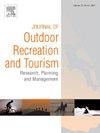Research note: Protected area labels as brands in tourism
IF 4.4
3区 管理学
Q1 HOSPITALITY, LEISURE, SPORT & TOURISM
Journal of Outdoor Recreation and Tourism-Research Planning and Management
Pub Date : 2024-12-14
DOI:10.1016/j.jort.2024.100851
引用次数: 0
Abstract
We assess the brand strength of the main large-scale protected area (PA) categories in Germany based on the marketing funnel logic. It has long been argued in the literature that PAs, in general, can be strong regional brands in tourism, but that different PA categories may have a stronger or weaker brand identity. For example, it is often claimed that the national park label is the most well-known worldwide, and hence the most attractive as a tourist brand. However, the difference in brand strength has so far not been systematically assessed with nationally representative studies. Our research note addresses this gap, relying on a representative panel survey (N = 3,192) for Germany. We find that national parks are indeed the strongest brand, and that nature parks, despite being often described as a rather weak protection category, come second. On the other hand, biosphere reserves, although characterized as the most modern approach to area conservation, have a much more diffuse image. Implications point to the need for a stronger focus on differences between PA categories in communication and marketing.
研究说明:保护区标签作为旅游品牌
我们基于营销漏斗逻辑对德国主要大型保护区(PA)品类的品牌实力进行了评估。长期以来,文献中一直认为,一般来说,PA可以成为强大的旅游区域品牌,但不同的PA类别可能具有更强或更弱的品牌认同。例如,人们经常声称国家公园的标签是世界上最知名的,因此是最具吸引力的旅游品牌。然而,到目前为止,品牌强度的差异还没有通过具有全国代表性的研究进行系统评估。我们的研究报告解决了这一差距,依靠德国的代表性小组调查(N = 3192)。我们发现,国家公园确实是最强大的品牌,而自然公园,尽管经常被描述为一个相当弱的保护类别,排在第二位。另一方面,生物圈保护区虽然被认为是最现代的区域保护方法,但其形象却更加分散。这意味着需要更加关注传播和营销中PA类别之间的差异。
本文章由计算机程序翻译,如有差异,请以英文原文为准。
求助全文
约1分钟内获得全文
求助全文
来源期刊

Journal of Outdoor Recreation and Tourism-Research Planning and Management
HOSPITALITY, LEISURE, SPORT & TOURISM-
CiteScore
6.70
自引率
5.30%
发文量
84
期刊介绍:
Journal of Outdoor Recreation and Tourism offers a dedicated outlet for research relevant to social sciences and natural resources. The journal publishes peer reviewed original research on all aspects of outdoor recreation planning and management, covering the entire spectrum of settings from wilderness to urban outdoor recreation opportunities. It also focuses on new products and findings in nature based tourism and park management. JORT is an interdisciplinary and transdisciplinary journal, articles may focus on any aspect of theory, method, or concept of outdoor recreation research, planning or management, and interdisciplinary work is especially welcome, and may be of a theoretical and/or a case study nature. Depending on the topic of investigation, articles may be positioned within one academic discipline, or draw from several disciplines in an integrative manner, with overarching relevance to social sciences and natural resources. JORT is international in scope and attracts scholars from all reaches of the world to facilitate the exchange of ideas. As such, the journal enhances understanding of scientific knowledge, empirical results, and practitioners'' needs. Therefore in JORT each article is accompanied by an executive summary, written by the editors or authors, highlighting the planning and management relevant aspects of the article.
 求助内容:
求助内容: 应助结果提醒方式:
应助结果提醒方式:


